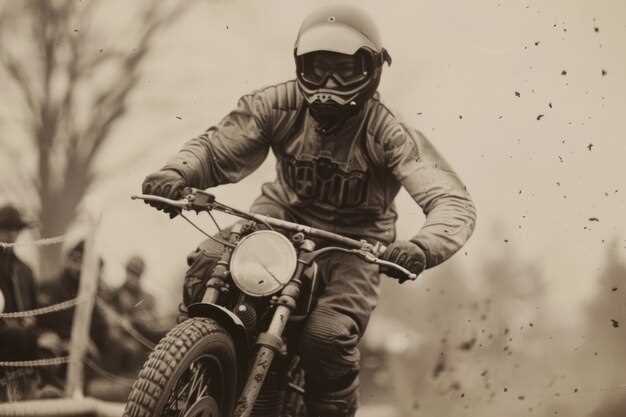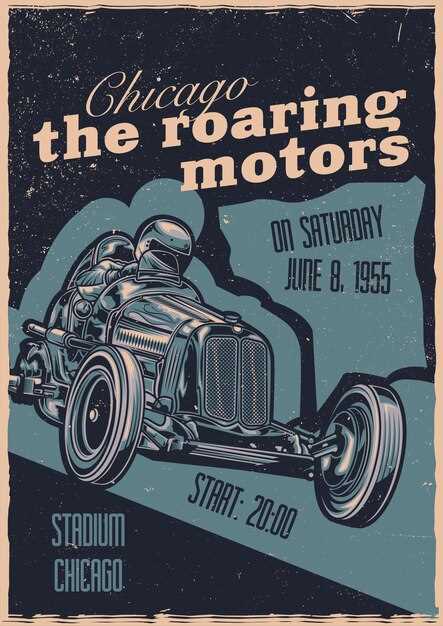
The world of American racing has a rich history, marked by a distinct era that has given birth to numerous legends. From the roaring engines to the adrenaline-fueled competitions, vintage racing has become a captivating chapter in the storied saga of motorsport in the United States. This article explores the evolution and impact of American vintage racing, shining a spotlight on the champions who have left an indelible mark on the sport.
As we delve into the era of vintage racing, it becomes evident that these timeless machines and their daring drivers embody a unique blend of art and engineering. Each race represents not only a contest of speed but also a revival of history, celebrating the passion that fuels America’s love affair with the racetrack. The revival of these classic races has not only captivated fans but has also fostered a newfound appreciation for the heritage of American motorsport.
Through the lens of nostalgia and competition, the tales of soaring success and dramatic rivalries take center stage. This exploration into the rise of American vintage racing legends provides a comprehensive look at how these iconic figures emerged and continue to inspire generations of racing aficionados. Join us as we honor the legacy of those who shaped the landscape of American racing and paved the way for future enthusiasts in this extraordinary era of speed and skill.
Key Milestones in American Vintage Racing Development
The evolution of American vintage racing has been marked by several key milestones that have shaped its current landscape. In the early days, the 1950s introduced the concept of preserving classic cars, leading to the formation of numerous clubs dedicated to vintage racing. These clubs aimed to create a community around the appreciation of historical automobiles, resulting in the first official vintage racing events.
In 1971, the Sports Car Club of America (SCCA) established a separate category for vintage vehicles, legitimizing vintage racing within the broader motorsports community. This milestone not only increased the visibility of vintage racing but also attracted a new generation of enthusiasts eager to participate and witness the nostalgic spectacle.
The 1980s saw the rise of iconic events such as the Monterey Historic Automobile Races, which showcased legendary cars and drivers. This event helped draw international attention to American vintage racing, establishing it as a significant segment of the automotive culture. The influx of spectators and participants highlighted the importance of preserving automotive history while promoting racing as a recreational activity.
In the 1990s, the creation of the Vintage Sports Car Club of America (VSCCA) marked another pivotal development. This organization provided a structured environment for vintage racers, emphasizing safety and authenticity while racing. The VSCCA encouraged members to restore cars to their original specifications, fostering a culture of preservation and respect for automotive heritage.
By the 2000s, technology began to play a pivotal role in vintage racing. The introduction of digital timing systems and modern safety equipment enhanced both the competitive nature and safety of the sport. This alignment of tradition with modern advancements attracted broader participation, including younger enthusiasts who appreciated the blend of historical significance and contemporary racing standards.
Today, American vintage racing continues to thrive, with events held across the country, showcasing a diverse array of classic cars and fostering a passionate community dedicated to racing. The milestones achieved in the past have laid a strong foundation for future growth, ensuring that the legacy of American vintage racing will endure for generations to come.
Iconic Vintage Vehicles Shaping American Racing History

Throughout the American racing era, several vintage vehicles have left an indelible mark on the motorsport landscape. These iconic machines not only reflect the technological advancements of their time but also embody the spirit and passion of American racing culture.
The Ford Model T, often credited with making automobiles accessible to the masses, laid the groundwork for the racing scene by popularizing car culture. Its versatility led to various modifications that turned this humble vehicle into a competitive racer in local events.
Another significant vehicle is the Shelby Cobra, which emerged in the 1960s. Designed for high performance, the Cobra dominated American road racing circuits, combining light weight with powerful engines. Its distinctive design and success on the track made it a symbol of the American muscle car era.
The Corvette, particularly the models produced in the 1950s and 1960s, further exemplifies the evolution of American vintage racing. With its sleek lines and powerful V8 engine, the Corvette became a staple in both showroom and racetrack, fostering a legacy that still resonates today.
In the world of NASCAR, the Dodge Charger and the Chevrolet Impala from the 1960s stand as classics. These vehicles changed the dynamics of stock car racing, introducing aerodynamic refinements and performance enhancements that would influence future designs.
These vintage vehicles, among others, not only shaped the racing history of America but also fostered a culture of innovation and competition that continues to thrive. They serve as a testament to the creativity and ingenuity of American automotive engineering during their respective eras.
How to Get Involved in the Vintage Racing Community Today

Engaging with the vintage racing community is a rewarding endeavor for those passionate about the classic era of American racing. Start by attending local vintage racing events and exhibitions to meet enthusiasts and professionals alike. These gatherings provide valuable insights into the culture and history of vintage cars, allowing newcomers to connect with others who share similar interests.
Consider joining organizations that focus on vintage racing. Groups such as the Vintage Sports Car Club of America (VSCCA) or the American Historic Racing Motorcycle Association (AHRMA) offer memberships that grant access to exclusive events, resources, and a network of like-minded individuals. These organizations often host competitions and social gatherings, creating opportunities for involvement at various levels of racing experience.
If you own a vintage car, participating in races or driving schools can be an exhilarating way to immerse yourself in the community. Many tracks offer programs specifically designed for novice drivers, emphasizing safety and education about the unique handling characteristics of vintage vehicles. Engaging in track days not only enhances your driving skills but also promotes camaraderie among fellow racers.
Another avenue to explore is volunteering at vintage racing events. Organizations continuously seek help for logistics, pit crew assistance, or event setup and teardown. This behind-the-scenes experience can deepen your appreciation for the sport while allowing you to meet influential figures within the vintage racing scene. You may also consider working on vintage cars, either by restoring them or serving as a mechanic at events.
Finally, consider engaging with online communities and forums dedicated to vintage racing. Platforms like Facebook groups or dedicated websites provide spaces for discussion, sharing experiences, and acquiring knowledge. This digital interaction can help bridge the gap until you’re ready to engage in face-to-face activities, making it easier to find your niche in the vintage racing world.

